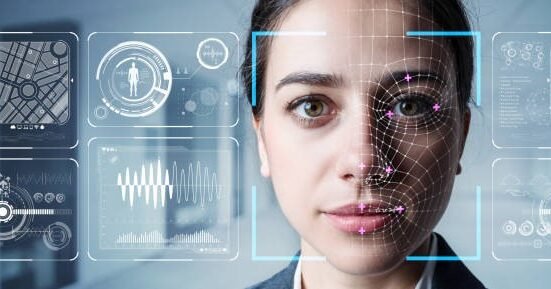In this era of big data, organizations are increasingly relying on analytics to extract meaningful insights and make informed decisions. Two terms that are often used in this context are “Data Analytics” and “Business Analytics.” While these terms may appear to be interchangeable, they actually represent distinct aspects of the analytics spectrum. In this blog post, we will explore the differences between data analytics and business analytics, providing detailed explanations of their unique roles and applications.
What is Data Analytics?
Data analytics primarily revolves around the process of examining, cleaning, transforming, and modeling raw data to derive valuable insights, draw conclusions, and support decision-making. It is a broader term encompassing various techniques and tools used to analyze datasets, identify patterns, and make predictions. Data analytics can be categorized into descriptive analytics, diagnostic analytics, predictive analytics, and prescriptive analytics.
Key Characteristics of Data Analytics:
Exploratory in Nature: Data analytics is exploratory, aiming to uncover patterns, trends, and relationships within datasets.
Statistical Analysis: Statistical methods play a significant role in data analytics, helping to infer patterns and draw meaningful conclusions.
Data Cleaning and Preparation: A substantial portion of data analytics involves cleaning and preparing data for analysis, ensuring the accuracy and reliability of results.
Visualization: Visualization tools are commonly used in data analytics to present complex findings in a comprehensible manner.
What is Business Analytics?
Business analytics is a more specialized field within the broader spectrum of analytics. It focuses on leveraging data to drive business strategy, enhance performance, and achieve organizational objectives. Business analytics encompasses a range of activities, including statistical analysis, predictive modeling, data mining, and multivariate testing, with a specific emphasis on business-related outcomes. Business analytics and risk management work together using data to spot and deal with potential risks, making the business smarter and more resilient.
Key Characteristics of Business Analytics:
1. Business-Centric: Business analytics is business-centric, aiming to align data insights with organizational goals and strategies.
2. Decision Support: The primary goal of business analytics is to support decision-making processes at various levels within an organization.
3. Strategic Planning: Business analytics goes beyond data analysis and contributes to strategic planning by providing insights into market trends, customer behavior, and operational efficiency.
4. Performance Optimization: This involves optimizing business processes, identifying areas for improvement, and ensuring that the organization is operating at its highest potential.
Distinguishing Factors:
| Factors | Data Analytics | Business Analytics |
| Scope and Focus | Primarily explores and analyzes data patterns. | Focused on applying insights to enhance business performance. |
| Application | Commonly applied in scientific research, healthcare, and various industries. | Applied specifically within the business context to improve efficiency and competitiveness. |
| DecisionMaking | Aids decision-making by providing insights from data analysis. | Directly influences strategic decisions, guiding the formulation of business strategies. |
| Industry Focus | Broad application across industries, including research and healthcare. | Specifically tailored to business operations, optimizing performance. |
| Techniques Used | Involves statistical analysis, data cleaning, and visualization. | Utilizes statistical methods, predictive modeling, and data mining. |
| Goal | Understand patterns and trends within datasets. | Improve business efficiency and competitiveness. |
| Data Preparation | Emphasizes cleaning and preparing data for analysis. | Focuses on ensuring data aligns with business objectives. |
| Visualization | Commonly uses visualization tools to present findings. | May use visualization but with a specific business-oriented context. |
| Strategic Impact | Generally has a more immediate and tactical impact. | Has a long-term strategic impact on the overall business direction. |
| Stakeholder Focus | Primarily caters to data scientists and researchers. | Targets a broader audience, including business stakeholders and executives. |
Which field is better: Data Science or Data Analytics?
The choice between Data Science and Data Analytics depends on individual career goals and interests. Data Science is broader and involves advanced techniques, machine learning, and deep learning, suitable for those interested in research and building predictive models. Data Analytics is more focused on extracting insights and is suitable for professionals aiming to apply data to improve business performance. Both fields offer promising career opportunities, and the “better” field depends on one’s preferences and aspirations.
Unlock the full potential of your data through the dynamic synergy of data science and business analytics software in USA. Our tailored solutions seamlessly blend cutting-edge analytics with business acumen, providing you with actionable insights to drive informed decision-making.
How is Data Science different from Statistics and Analytics?
Data Science vs. Statistics: While both involve working with data, statistics traditionally focuses on hypothesis testing and inference from a sample to a population. Data Science is a broader field that includes statistics but extends into machine learning, big data technologies, and a wider array of data processing techniques.
Data Science vs. Analytics: Data Science often involves predictive modeling and machine learning to uncover complex patterns, while Data Analytics is more focused on interpreting historical data to guide business decisions. Analytics can be seen as a subset of Data Science, with a narrower focus.
What is the difference between Data and Analytics?
Data: Refers to raw facts and figures, often unprocessed and in its natural state. Data can be structured or unstructured and serves as the foundation for analysis.
Analytics: Involves the processing and interpretation of data to extract meaningful insights. It encompasses various techniques, such as statistical analysis, data mining, and machine learning, to uncover patterns, trends, and relationships within the data.
What is the difference between Information Science and Data Analytics?
Information Science: Encompasses the study of information systems, information retrieval, and the management of information. It is a broader field that includes aspects of computer science, library science, and cognitive science.
Data Analytics: Specifically focuses on the analysis of data to extract actionable insights. It involves techniques such as statistical analysis and data mining. While Information Science looks at the broader context of information management, Data Analytics is more concerned with leveraging data for decision-making and problem-solving.
Conclusion:
While data analytics and business analytics share commonalities in their use of data and analytical techniques, the key distinction lies in their objectives and applications. Data analytics serves as a foundational step, exploring and uncovering patterns within datasets, while business analytics takes these insights and applies them strategically to drive business success. Both are integral components of the analytics landscape, working in tandem to empower organizations with the knowledge needed to thrive in today’s data-driven world.








Leave feedback about this